
China
17:51, 27-Jan-2018
China’s toilet revolution: Flushing out substandard facilities
Nadim Diab, Gao Xingzi, Anosi Wang and Wu Chutian

When it comes to maintaining a squeaky clean image of its public restrooms, China has long strained. Horrendous hygiene standards have for years soiled the reputation of the country’s toilet facilities, prompting authorities to scramble to scrub off the stains that have tarnished its forays towards modernity.
From gut-wrenching stench that assaults the senses to cubicles without any partition to keep one’s private business private, traumatizing tales of toilet terrors are not in short supply among foreigners and locals alike.
The Chinese authorities have not swept the grim situation under the rug.
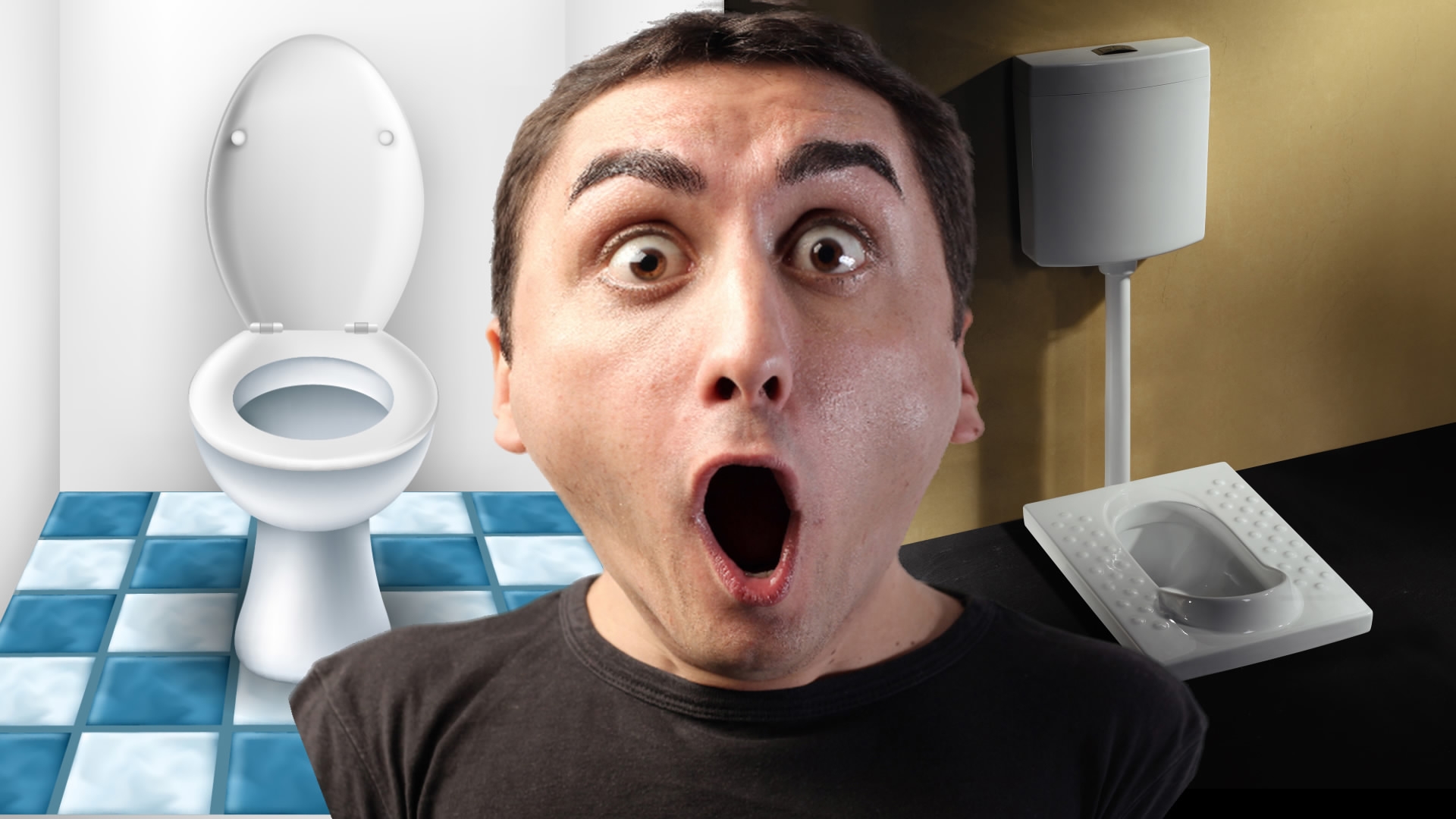
As early as the 1950s, the government began to introduce health campaigns aiming at providing basic sanitation for people, retrofitting toilets, managing water supply and human manure, and spreading education about hygiene and disease prevention.

China's toilet revolution started in the 1950s. /Photo Courtesy Wang Yi
China's toilet revolution started in the 1950s. /Photo Courtesy Wang Yi
The aim was to expand the reach of sanitary toilets, especially in rural areas, and improve the country’s sanitary infrastructure and sewerage system for waste treatment. The efforts paid off, and more Chinese enjoyed access to hygienic restrooms.
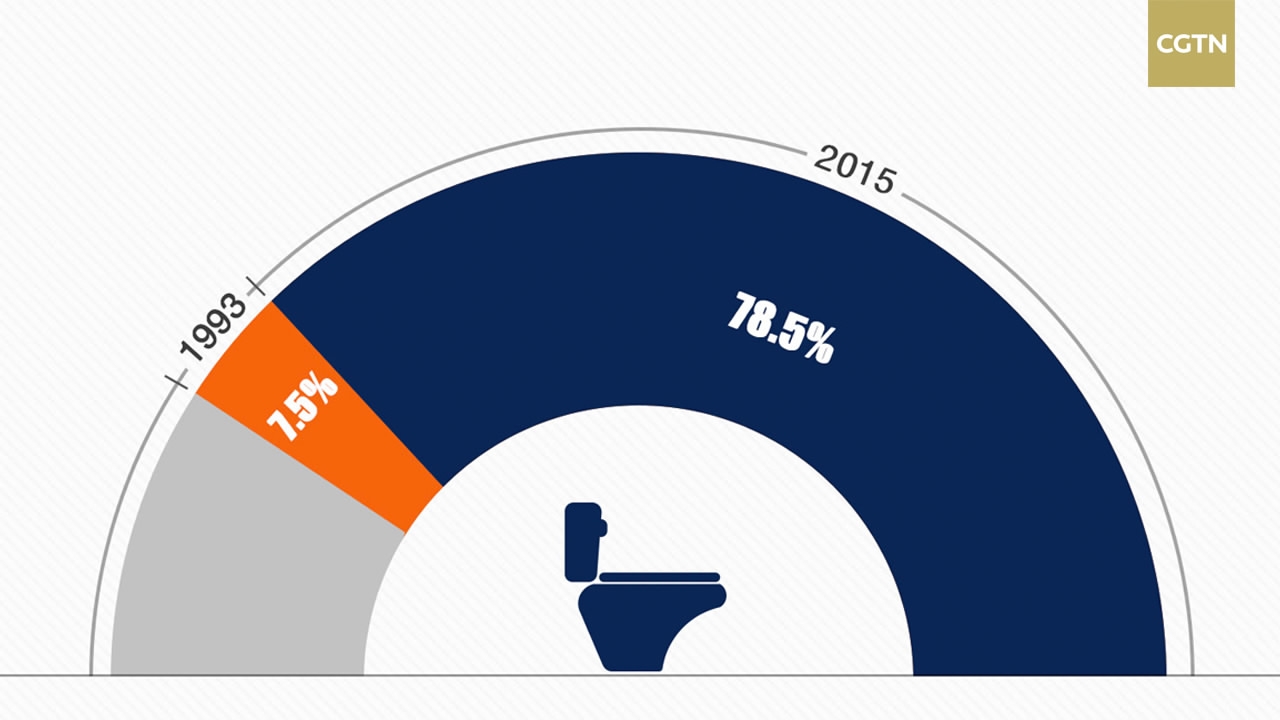
The coverage of sanitary toilets in the countryside /CGTN Photo
The coverage of sanitary toilets in the countryside /CGTN Photo
According to 2016 data by the country’s top family planning authorities, the coverage of sanitary toilets in the countryside increased from 7.5 percent in 1993 to 78.5 percent in 2015. Meanwhile, the coverage of harmless sanitary toilets stood at 57.5 percent by the end of 2015.
But despite the efforts, clogged issues persisted. Fifty-seven million Chinese households are still without their own sanitary lavatory – and of those, 17 million are at risk of hazardous hygiene-related problems due to substandard facilities.
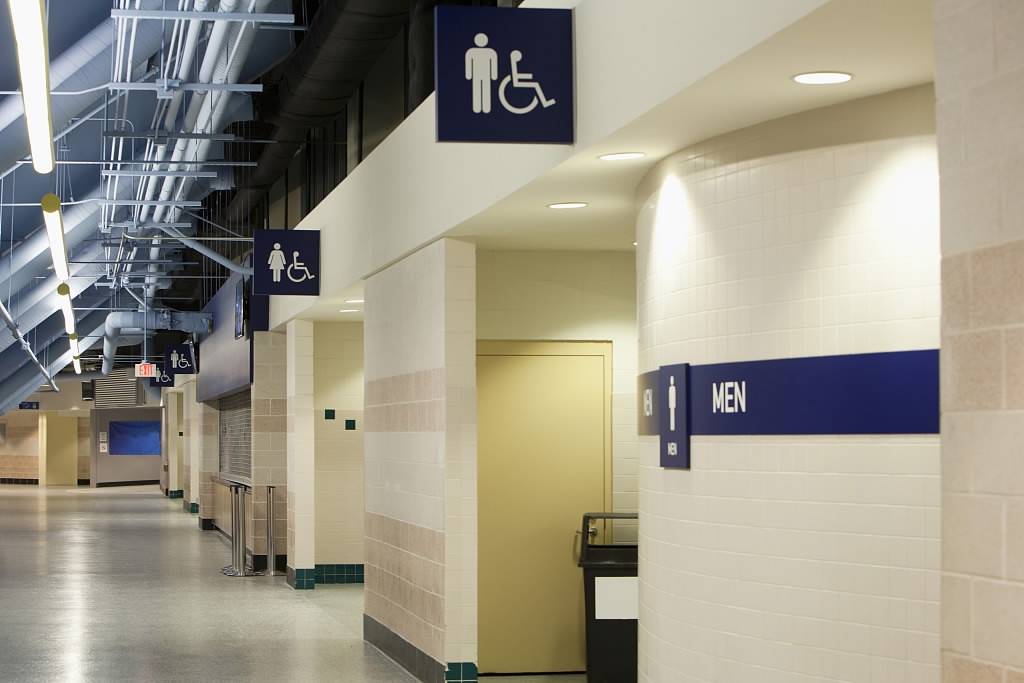
Modern restrooms /VCG Photo
Modern restrooms /VCG Photo
Under the guidance of President Xi Jinping, China made a fresh push in 2015 to upgrade its public restrooms, driven by the belief that toilets are a gauge of a country’s civilization. The three-year toilet plan aimed to support the fast growth of the tourism industry, valued at about 3.9 trillion yuan in 2016, by answering to the needs of travelers and improving the standards of public toilets in scenic spots and tourist attractions.
Soon, a new term cropped up in the public discourse in China, and “Toilet revolution” made its way to the list of President Xi’s 20 most influential terms he used that year, along with buzzwords such as “Four Comprehensives” and “supply-side reforms”.
Between 2015 and 2017, the central government injected one billion yuan in funding and local authorities splashed out more than 20 billion yuan – 2.5 times more than China’s investment in upgrading toilets in the decade ending in 2013.
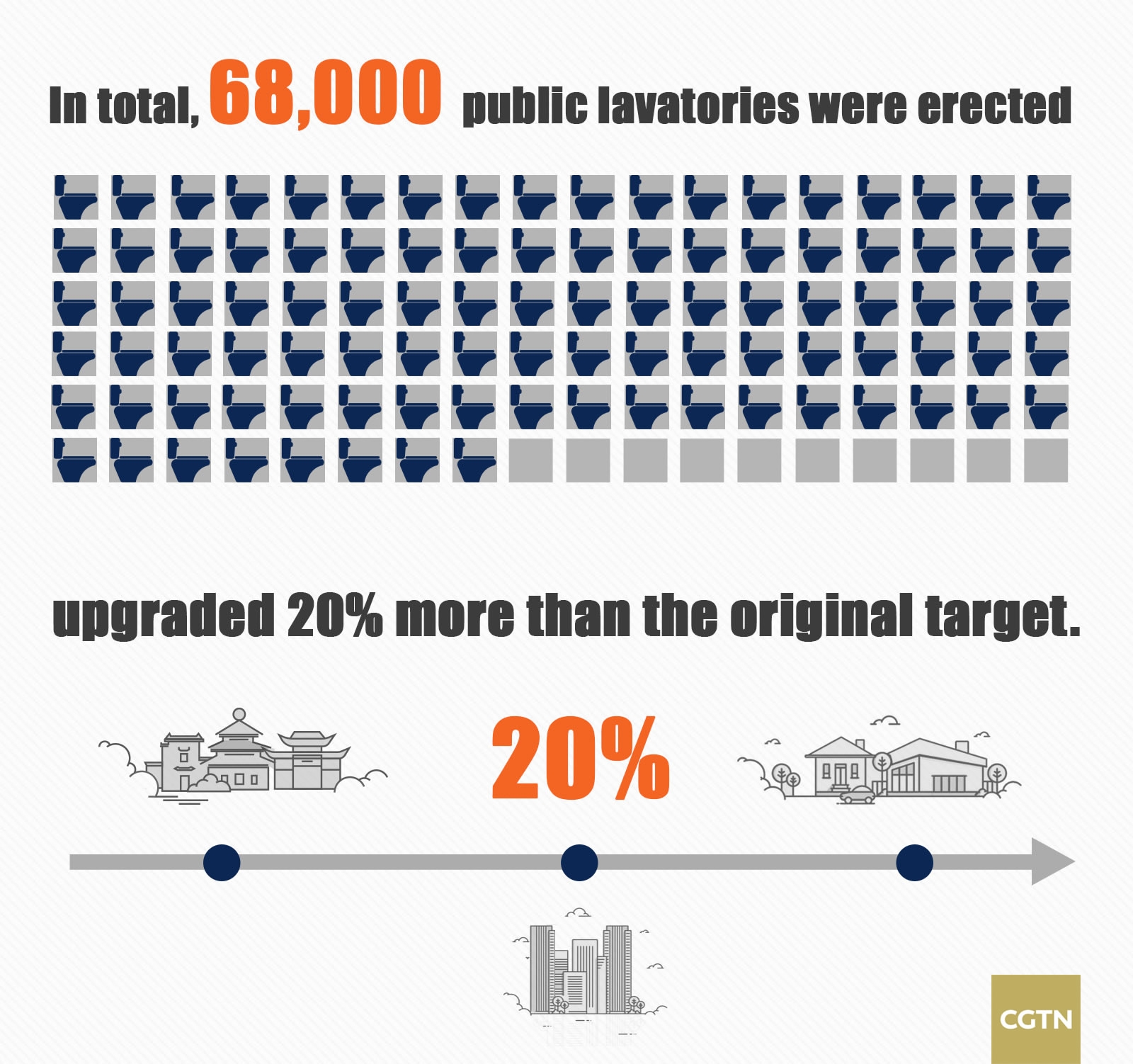
68,000 public lavatories were erected or upgraded. /CGTN Photo
68,000 public lavatories were erected or upgraded. /CGTN Photo
In total, 68,000 public lavatories were erected or upgraded – 20 percent more than the original target.
Yet, Beijing is not ready to call it quits.
In 2017, the government announced the second phase of its campaign to improve toilets nationwide, targeting rural and urban areas in its attempt to build what Xi has called a "new countryside” and make good on its promise to finalize an all-round moderately prosperous society by 2021.
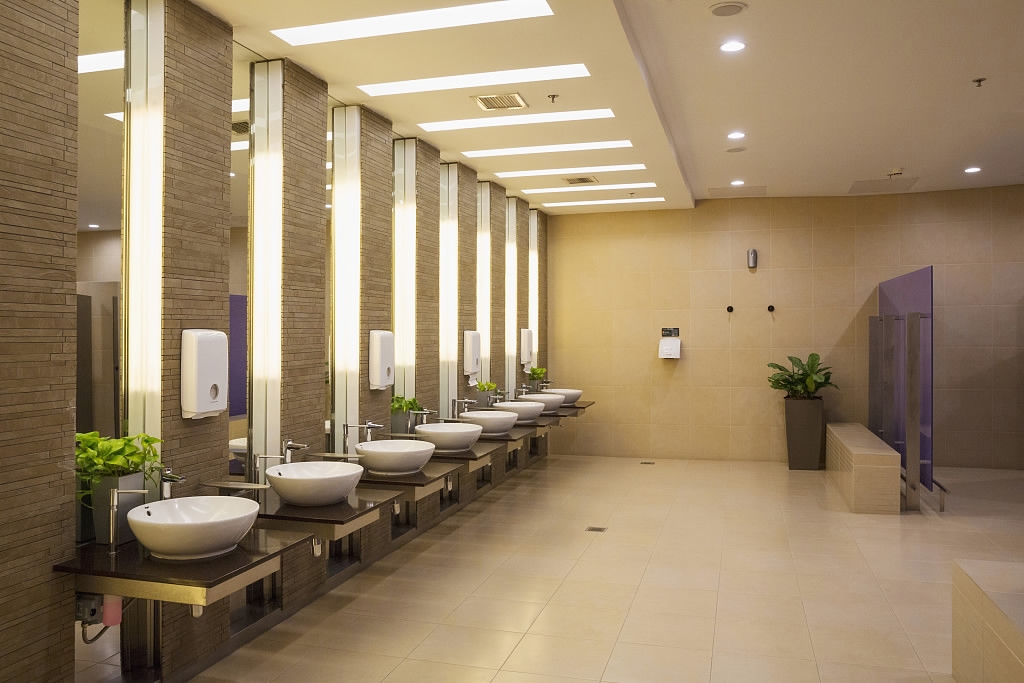
Modern restrooms /VCG Photo
Modern restrooms /VCG Photo
On November 19, 2017, which marked World Toilet Day, China announced its plans to install 47,000 toilets and refurbish another 17,000 existing ones in the next three years as the country turns its toilet situation from appalling to appealing.

SITEMAP
Copyright © 2018 CGTN. Beijing ICP prepared NO.16065310-3
Copyright © 2018 CGTN. Beijing ICP prepared NO.16065310-3